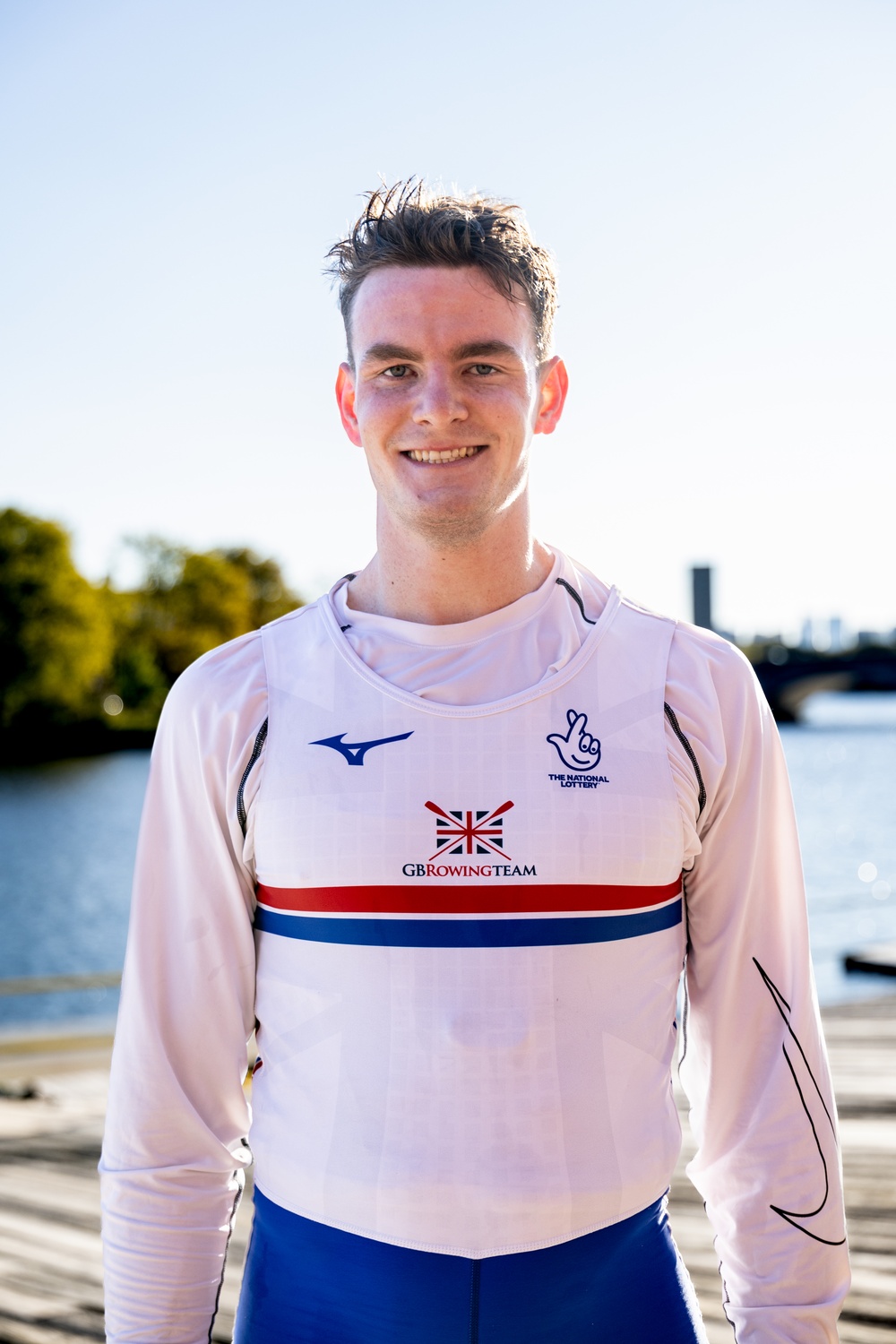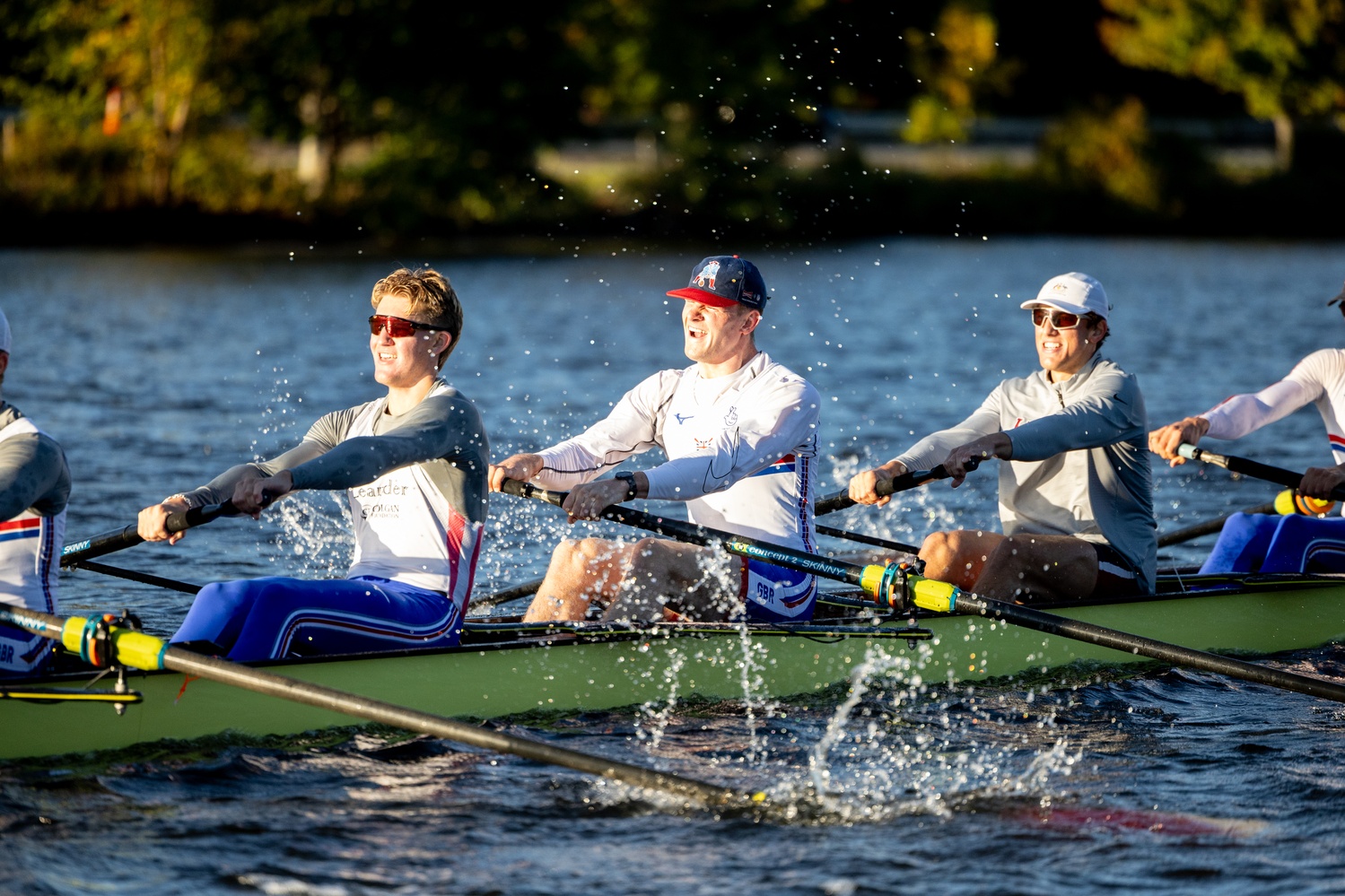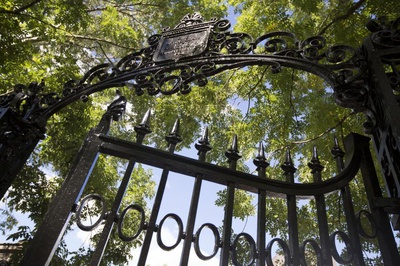
News
Harvard Grad Union Agrees To Bargain Without Ground Rules

News
Harvard Chabad Petitions to Change City Zoning Laws

News
Kestenbaum Files Opposition to Harvard’s Request for Documents

News
Harvard Agrees to a 1-Year $6 Million PILOT Agreement With the City of Cambridge

News
HUA Election Will Feature No Referenda or Survey Questions
Carrying the Boats: A Day in the Life Preparing for the Head of the Charles

If a Harvard student knows one thing about crew, it's that every time they walk past the Charles River, they seem to see the boats flying down the water. That is because the crew teams work through a whopping eleven practices each week. In theory, that doesn’t sound too difficult. But, add that workload to all the normal parts of college life — the classroom, extracurriculars, and a social life — and you arrive at an almost impossible feat, seemingly taken on by only the most masochistic among us.
Senior heavyweight rower Gabriel Obholzer has somehow made it all work. And, he’s made it work to the highest standard of both school and sport. Hailing from London, Obholzer has been rowing since he was a child. At 17, Obholzer set the British 2000m junior record. Last season, Obholzer earned First-Team IRCA All-American honors, and won his second U23 World Championships for Great Britain.
The Crimson was given the unique opportunity to follow Obholzer during a day of training in the run-up to the Head of the Charles. From a pre-sunrise wake-up to double training sessions, a typical day in his life as a student-athlete was equal parts intimidating and inspiring.
6:15 AM: Obholzer starts his morning in Adam's House. Five minutes later, he groggily texts the boat group chat good morning, making sure everyone is awake and ready to head over to the boathouse. He quickly throws on his gear, and races out the door to grab two bagels at Lowell, before making the trek to the boathouse, arriving by 6:45.
“We have to get up early because our bow seat has a biology class at 9:00,” Obholzer half-jokes. “Once you get in a routine it's easier. Normally I am in bed before 10:00 p.m. I just have to get my homework out of the way.”
While this routine might seem daunting, it’s the boat members’ dedication to their craft that drives their tenacious schedule. Making sure everyone can be present is essential to their success, but finding time within their hectic Harvard schedules – with the onslaught of work from classes and extracurriculars – drives them to practicing before the sun crests over the Charles.
“I feel like doing it helps me get into school mode,” Obholzer says about waking up at the crack of dawn. “I feel like I am super switched on as soon as I walk in the classroom.”
7:00 AM: Obholzer and the rest of the varsity boat — the ‘1V’— carry their boat down to the dock into the water. As the sun rises above the horizon, the rest of the team throws their boats in the river until the surface seems to be entirely covered with shells. By 7:05, the team is off to the races, rowing to the call of their coxswains.
A typical practice consists mostly of paddling — rowing at a jogging pace — but this practice, in preparation for HOCR, is different. The team practices at full speed down the entirety of the course, mimicking the twists and turns it will see on race day. As we paddle up river to get to the starting line, Head Coach Charley Butt shouts orders through a megaphone.
“I was thinking, damn, this is pretty hard, but I knew everyone else was feeling the same way, and we’re all gonna do it again,” Obholzer says. “Maybe I am a bit of a masochist, but I love it.”
“Bring your lower arm up,” Butt shouts, and the rowers quickly adjust their positioning.
Once they arrive at the starting line, it’s time to turn around and sprint down the course.
On the Coach's command, the team quickly accelerates to a full sprint. They fly down the Charles at a pace of nearly 14 miles per hour, exhausting their bodies in the process. They pass iconic Boston landmarks such as the CITGO sign, the MIT quad, and the Charles River Esplanade along their journey down the course, finally taking a break by Harvard Square. After only a couple minutes of rest, they take off again. Their second journey has them sprinting deep into Cambridge and towards Watertown. It was cold and windy, yet the crew was overheating, exhausted by their work. After an hour and a half, practice ends.

8:40 AM: Obholzer and the rest of the team hit the shower, change, and get ready for the rest of their day.
9:10 AM: After practice, most of the team goes to breakfast in the Quincy dining hall to cool down and get ready for the day. With such a big team, they take up a long stretch of the table and each rower shovels in enough calories to put a non-athlete to shame. For Obholzer, standard fare is three bowls of oatmeal and a blueberry waffle, washed down with three glasses of milk.
11:00 AM: After his hearty breakfast, which Obholzer describes as “light,” the Brit meets with Professor Dimiter Angelov to talk about his history seminar. Having worked up an appetite once again, he treks from his meeting to the Adams House dining hall for his first lunch, a bowl of turkey chili and rice.
12:00 PM: He goes to his lecture for The Power and Beauty of Being In Between: The Story of Armenia, an aesthetics and culture Gen Ed, and takes down another bowl of turkey chili and rice right after.
3:00 PM: Nearly nine hours after he woke up, Obholzer goes to his Authoritarianism section.
4:30 PM: The academic day isn’t over quite yet. Finally, Obholzer attends his History 10 section, squeezing in his third class of the day while the rest of the team lifts. For the Varsity boat it is a rest day anyway, so they’re lifting under their maximum threshold. The lightweight and heavyweight rowers share the gym. They deadlift, bench press, and split squat, mostly focusing on the lower body because rowing, at its core, is a lower body sport. Because he wasn’t able to make the second practice due to his conflicting class schedule, Obholzer will have to lift weights on his own in the evening to make sure he is on the same schedule as the rest of his boat.
Due to the unique schedule the rowers must adhere to, there is some flexibility in their course selection. The crew teams are never in an “off-season” period, and as such stick to the rigidity of 11 practices a week throughout both semesters. In an effort to fit in their rigorous course loads, they must find times where all nine members of the boat can row together. As a last resort, rowers can tackle the solo aspects of lifting on their own if their schedules are incompatible with the rest of the squad, as Obholzer does.
6:00 PM After the senior finishes his section for The History of the Present, he has his first dinner of the night: pork and rice at Adams House. After an hour of eating and catching up with his friends, he goes to the Murr, the athletes’ gym across the Charles River, to lift weights. Obholzer works on most of the muscle groupings his teammates hit during their 4:30 session. By 8:10, his workout is done.
9:05 PM: Obholzer makes the journey back across the bridge and sets out for his final meal for the day, a chicken burrito from Achilitos Taqueria (he likes the pineapple salsa).
9:50 PM: Having downed his burrito on the walk back to Adams, just 45 minutes later it’s lights out for the rower, as he has to wake up to do it all again in the morning.
While I personally couldn’t imagine having to wake before the sun rises tomorrow after such a frenetic day, for Obholzer this jam-packed routine is just one of many. Being a varsity rower certainly isn’t for everyone, but the community and the joint feeling of achievement make it worth it for Gabe.
—Staff writer Thomas Harris can be reached at thomas.harris@thecrimson.com
Want to keep up with breaking news? Subscribe to our email newsletter.
Related Articles
From Our Advertisers

Over 300+ courses at prestigious colleges and universities in the US and UK are at your disposal.

With innovative financial tools combined with financial education, Collegiate empowers students to take control of their finances and build confidence in their money management skills.

Serve as a proctor for Harvard Summer School (HSS) students, either in the Secondary School Program (SSP), General Program (GP), or Pre-College Program.

With an increasingly competitive Law School admissions process, it's important to understand what makes an applicant stand out.

Welcome to your one-stop gifting destination for men and women—it's like your neighborhood holiday shop, but way cooler.

Admit Expert is a premium MBA admissions consulting company, helping candidates secure admission to top B-schools across the globe with significant scholarships.
